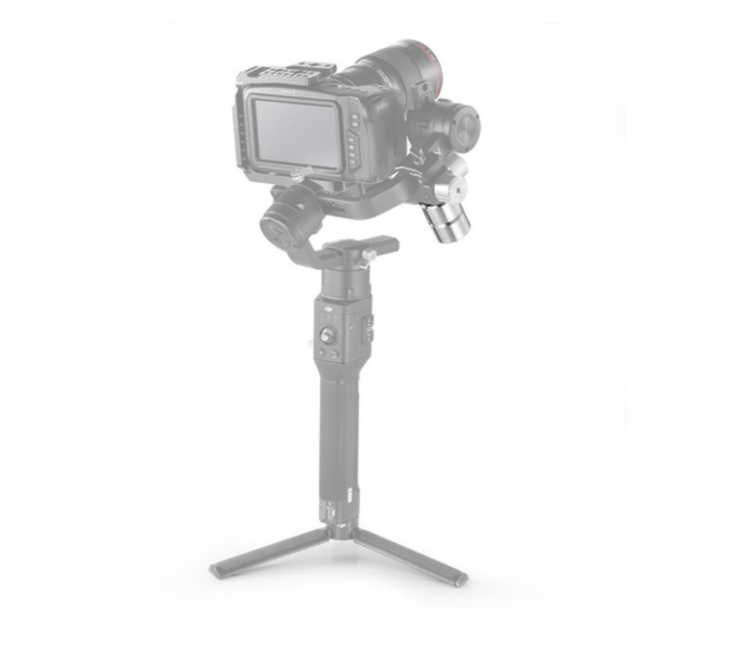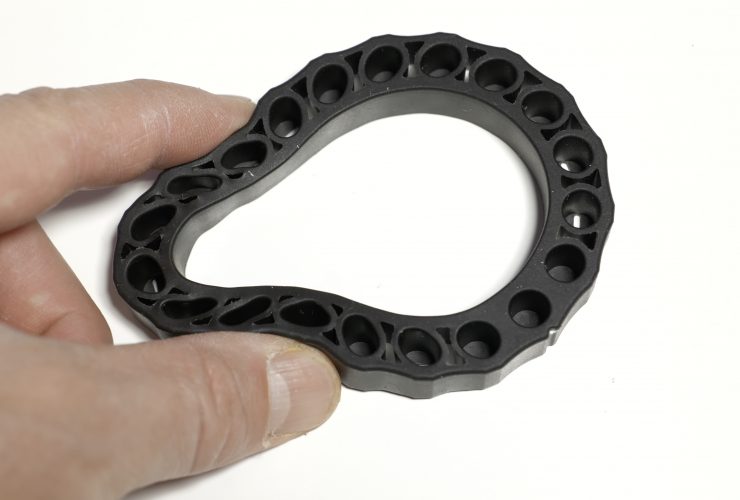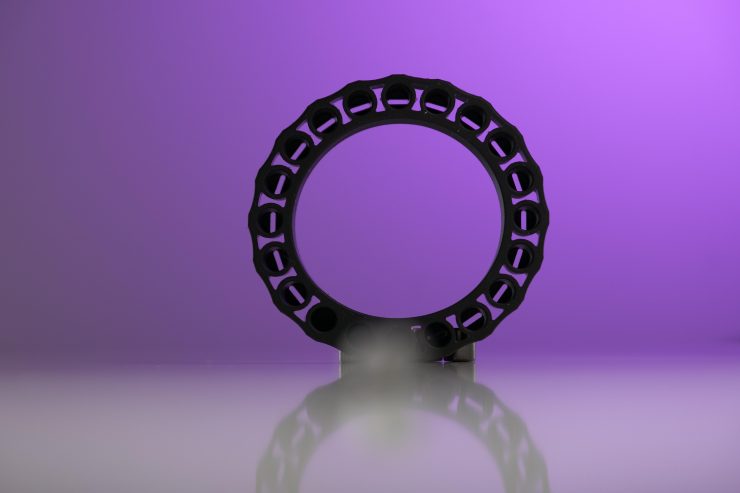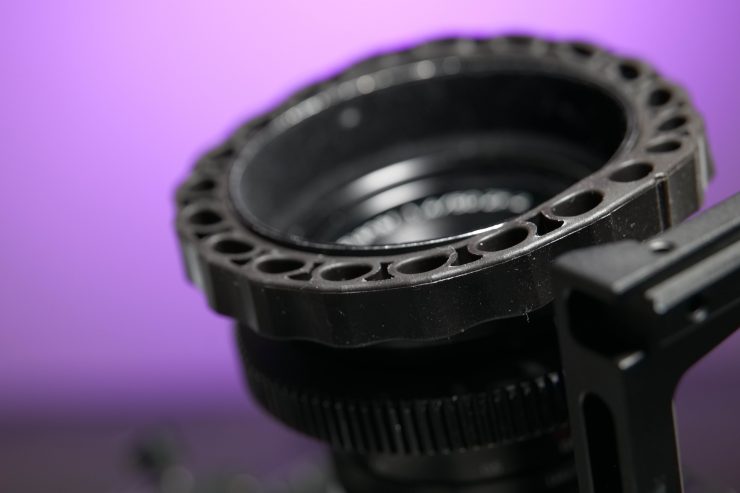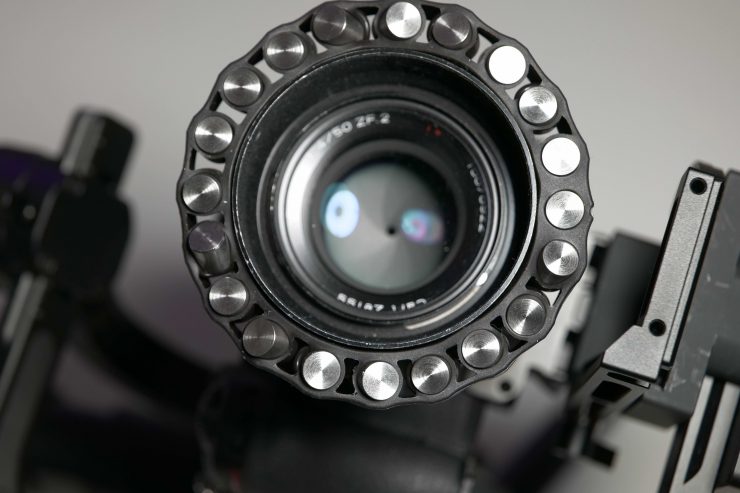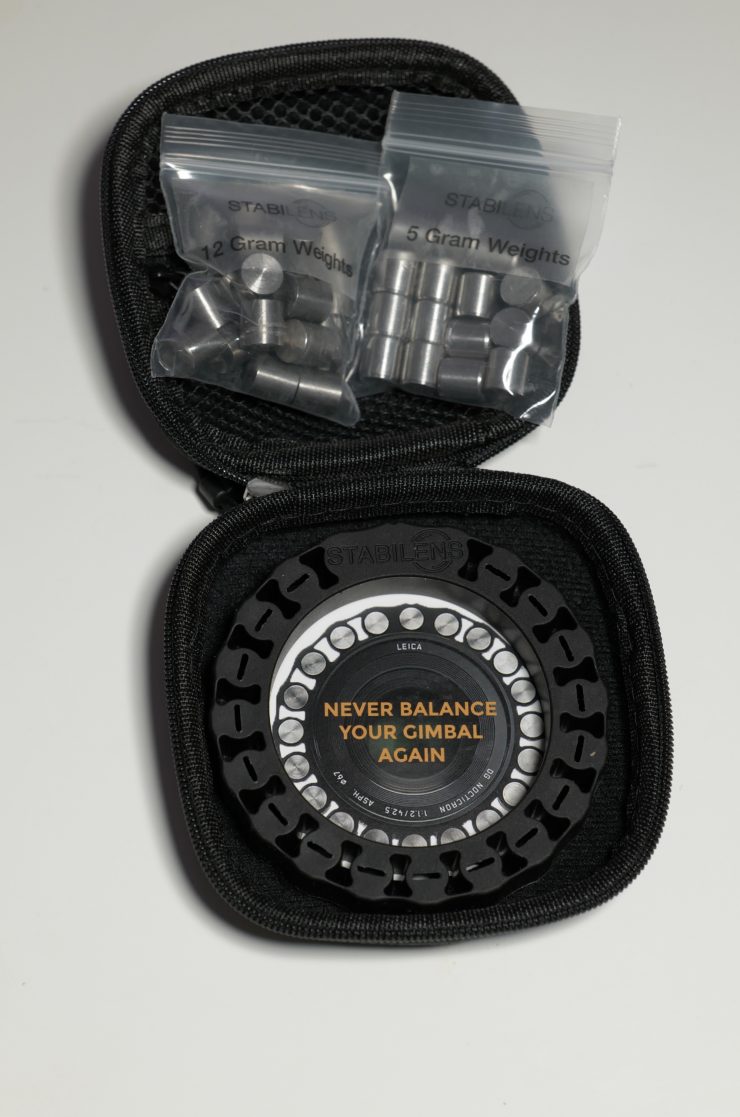
You may well recall an article we ran on the site about StabiLens, a gimbal ring counterweight system. We certainly had some mixed comments from readers about just how well it would work and why you would need to use a product like this, so I thought I would get hold of one and find out.
There are various kits available, but I will be reviewing the Cinematographer’s Kit. Just to be clear, the version of the Cinematographer’s Kit I am reviewing is a pre-production version. The ring has some small cosmetic issues that have been fixed and won’t be present on the production version. The version I have also didn’t include the final product packaging.
Concept
StabiLens was designed to allow you to swap lenses in the field without having to rebalance your gimbal. The company also claims that it allows you to swap accessories like clip-on matte boxes or large filters (such as circular ND) without having to rebalance your gimbal.
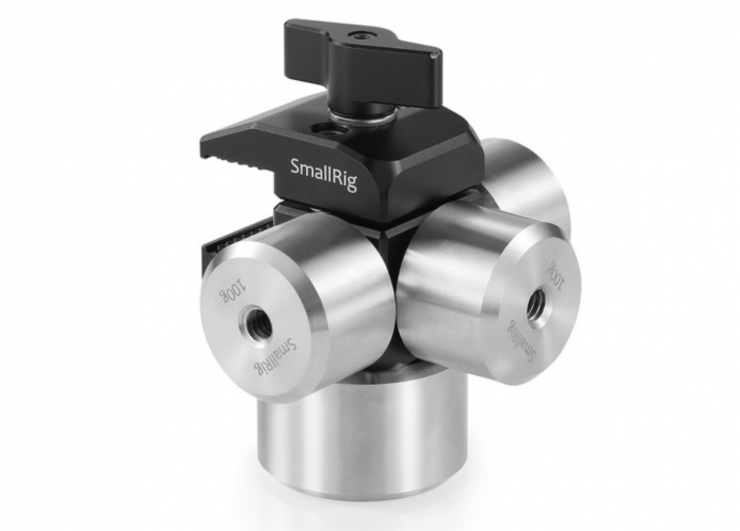
Unlike other counterbalance weights that are placed on the gimbal arm or on brackets that require rebalancing for different camera & lens combinations, the StabiLens is placed on the lens.
The quickest way to use the system would be to have a StabiLens for each lens that you use. This lets you keep the camera in the same position for each lens combination, letting you simply swap out the lenses as required.
Rings
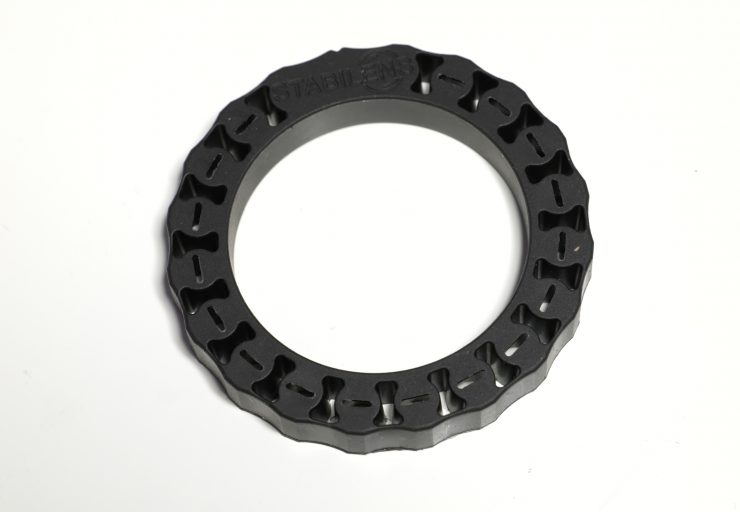
The rings are made out of rubber and you simply just stretch them over the lens you are using. It is fairly easy to get the rings onto a lens. I wouldn’t recommend trying to put the ring on with any weights inside.
Weights
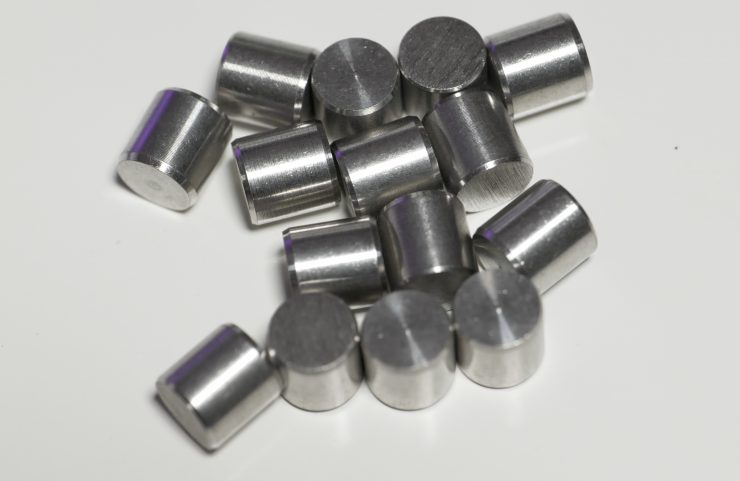
Just like most balancing, it all about weight distribution. With gimbals, you need to be able to make incremental adjustments to achieve a good balance. It is no surprise that the SabiLens uses small weights and rings to achieve this.
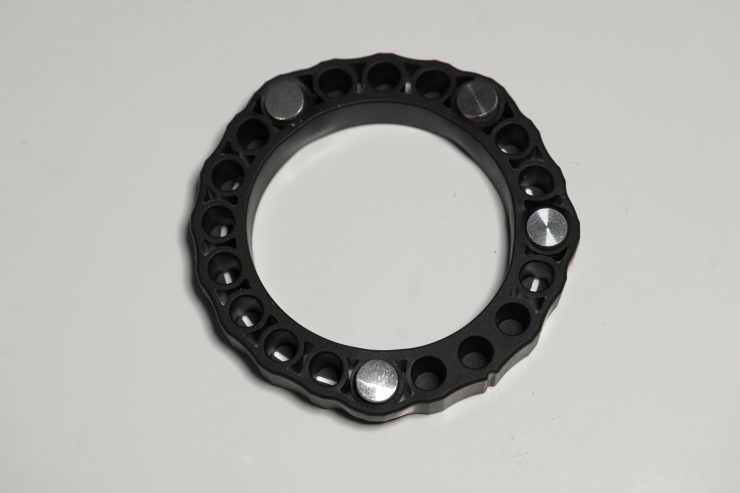
Each ring can hold up to 20 individual weights, either the tungsten alloy weights (12g/0.4oz) or steel weights (5g/0.17oz). Depending on the lens, you could add or remove weights for a total of 240g/8.4oz or as little as 5g. More on this later.
Set-Up
The StabiLens system really relies on you doing your homework and preparing ahead of time. To get the benefit of time-saving when shooting you need to configure and balance your lenses before you go out on a shoot. You don’t want to be doing this on location.
So how do you use it?
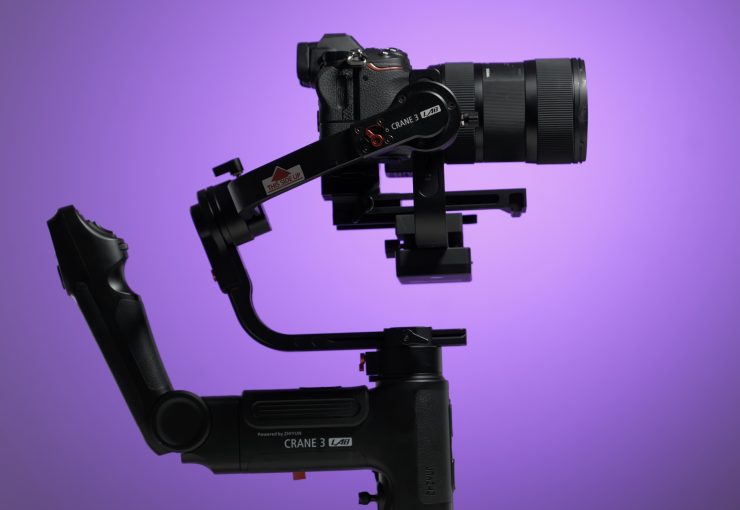
Basically you do a normal balance with whatever happens to be your heaviest lens. This sets a baseline for how you use the Stabilens system.
Once you have done your normal balancing, you will add the StabiLens to any lighter lens you want to use on your camera and gimbal combination.
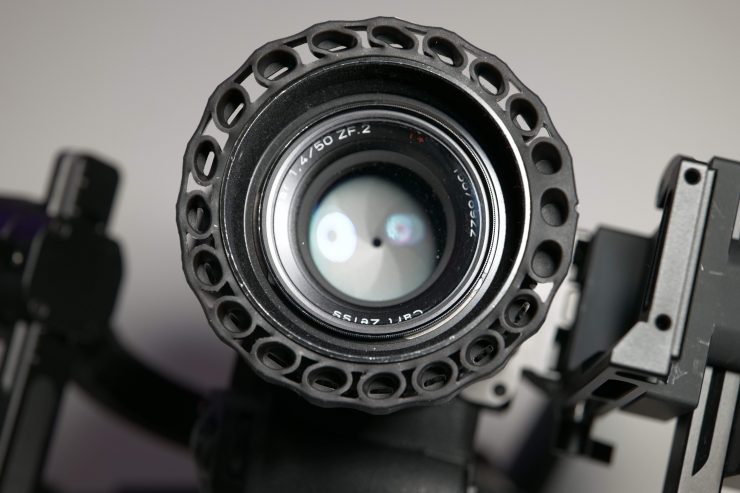
You do this by attaching the rubber ring to the lens. You just need to place it in a position that doesn’t interfere with the focus ring or any variable ND or filter you may be running.
StabiLens recommends that you place the Gimbal Ring on your lens hood. That allows you to quickly add and remove it with a single twist. You can also put it anywhere else on your lens as long as you avoid the focus and zoom rings. If those rings move it may change your balance. The trouble with this recommendation is that a lot of people don’t run lenses with a lens hood. If you are using a larger variable ND, for example, an 82mm version, with a step-down ring, you can’t use a lens hood.
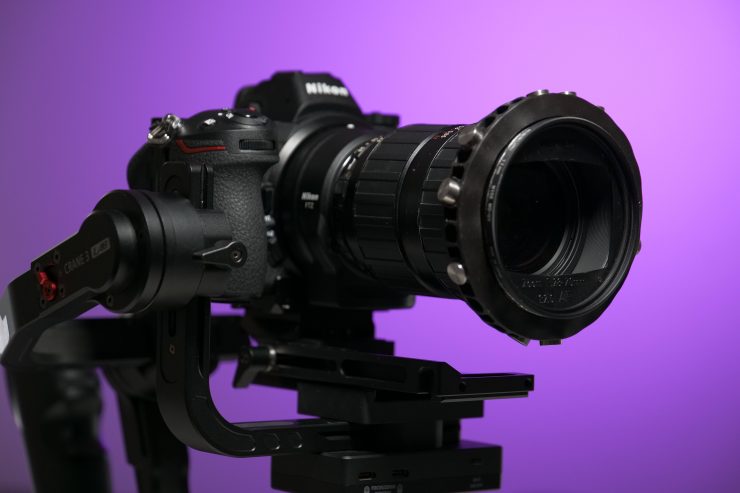
Once it is on you need to start adding weights by placing them into the holes on the adapter ring. Now, if your gimbal is leaning to one side you need to place more weight on the opposite side of the ring.
This whole process is a little tedious and time consuming, which is why you need to do it well in advance of any shoot.
Once you have done it for one lens, you just repeat the process for any other lenses you plan on using.
What you also need to be mindful of is you need to then leave that ring on the lens and not move the ring in any way. If you do, your balance will be ruined. This does make it slightly awkward when it comes to storing your lenses in a bag.
More weight on the front?
A lot of times I find myself having to move the camera body further back on the gimbal when I’m using a larger lens, so why on earth would I want to attach more weight to the front? Well, if you are swapping over from a heavier to a lighter lens, the StabiLens allows you to keep your set up the same. You are only adding weight when changing to a lighter lens.
There is no reason why you couldn’t use the StabiLens in conjunction with something like DJI’s counterweight system.
Where I think the StabiLens also makes sense to use is with larger gimbals such as a Movi or a DJI Ronin 2 when running bigger cameras. It is here where the camera will actually weigh more than the lens you are using. In cases like this, you may want to add more weight to the front of a lens.
What diameter lenses will StabiLens work with?
The rings can fit any lens between 58-110mm in diameter. This is a good range and it will cover most still photography lenses and some cine glass. The company does plan of releasing a larger diameter lens ring sometime this year.
Can you use it with zoom lenses that extend?
Well, yes and no. The trouble with zoom lenses is you would need to know exactly what focal lengths you plan on using your lens at which is rarely the case.
You could balance the lens with the zoom at its furthest most position and then attach the StabiLens once it is back at its shortest position. This does work, but I probably wouldn’t recommend doing it.
Works on any gimbal
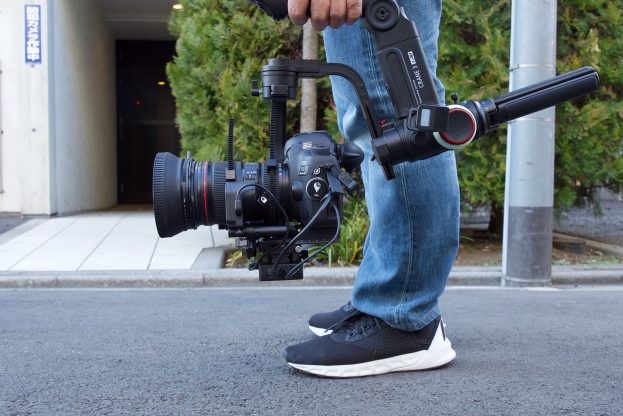
Since the counterweights are being placed on the lens, the system will work across multiple gimbal models and brands. It is not limited to just single-handed gimbals like the Ronin-S or Zhiyun Weebill etc.
This makes it quite versatile as you can move the product from one gimbal to another.
So why would you use StabiLens?
This is a valid question so I reached out to StabiLens to ask them why you should use their product. Here is what they said:
By attaching StabiLens to the lens hood it makes speed, repeatability, and storage easier. It also shifts the weight further away from the center of the lens allowing you to balance a wider range of lenses.
It gives you the flexibility to use all of your lenses. You can switch your gimbal to a long lens for a shallow depth of field close up. It is even useful if you just want a quick locked off shot without gimbal movement. You can achieve this flexibility without removing the camera from the gimbal.
If you’re shooting an indoor/outdoor event and want to use a faster lens for indoors, you don’t have to waste time constantly rebalancing your set up.
For those who aren’t very good at balancing gimbals, you can make changes without having to re-balance every time.
It allows you to get more diverse shots rather than settling with using that one “gimbal lens”.
By putting a QR plate on the bottom of the gimbal you can just leave your camera on the gimbal all day, even during interviews. Just use the QR plate and throw it on your tripod, or throw it on a slider to get slider shots with a motion control head (the gimbal) with nearly no setup time.
It’s easier than balancing your gimbal: Balancing a gimbal ring is much easier than tweaking each axis individually.
Works on all balanced camera platforms – Such as balanced tripods, Steadicams and GlideCams.
Real World Performance
So does it actually work and how useful is it? To be completely honest, I found it very hit and miss.
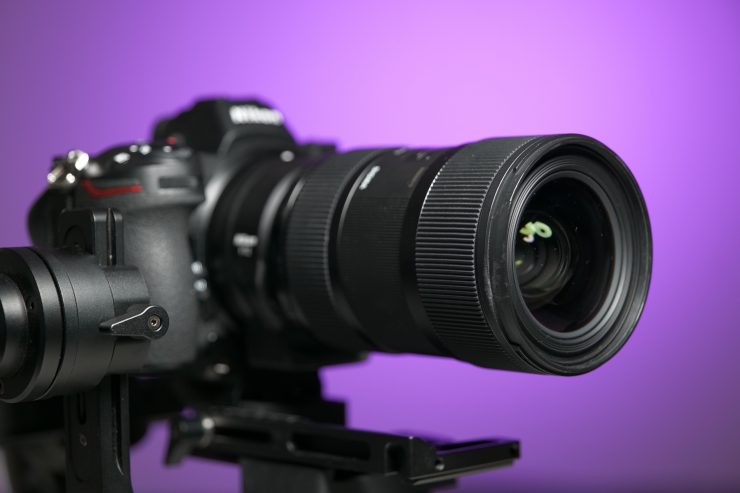
I put a Nikon Z6 onto a Zhiyun CRANE LAB 3 with an FTZ Mount Adapter and Sigma 18-35mm F1.8 lens. I then balanced that configuration.
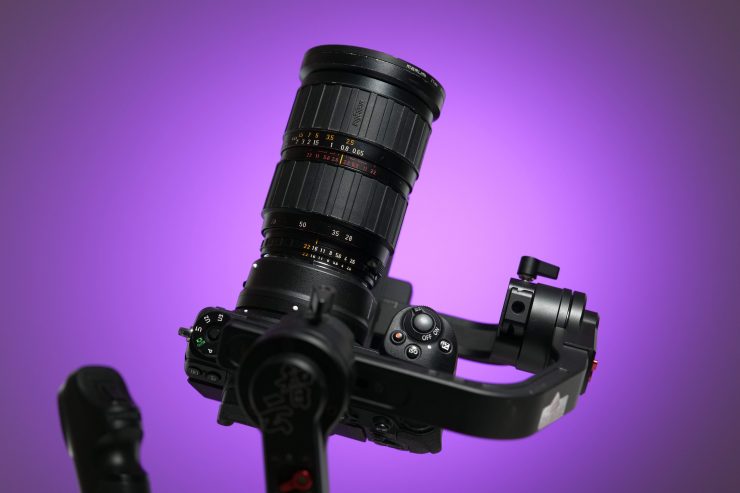
I then decided to change the lens to an old Angenieux 26-70mm F2.6. As expected, the balance changed and the camera tilted backward.
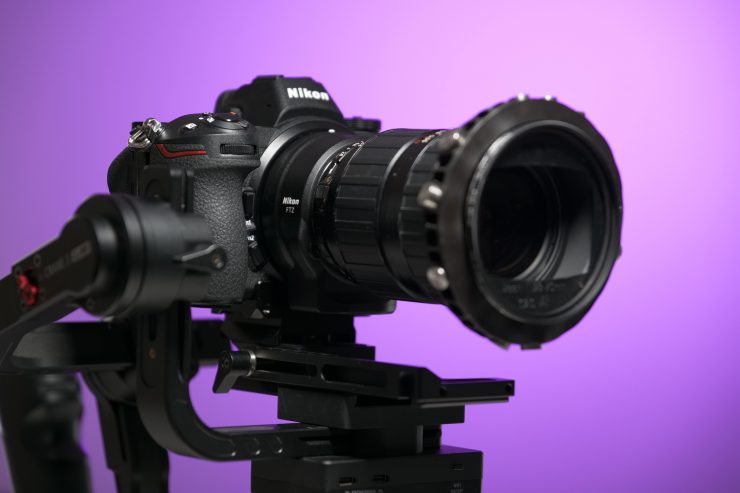
As this lens is lighter than the Sigma 18-35mm F1.8, I put the lens ring on and added some weights.
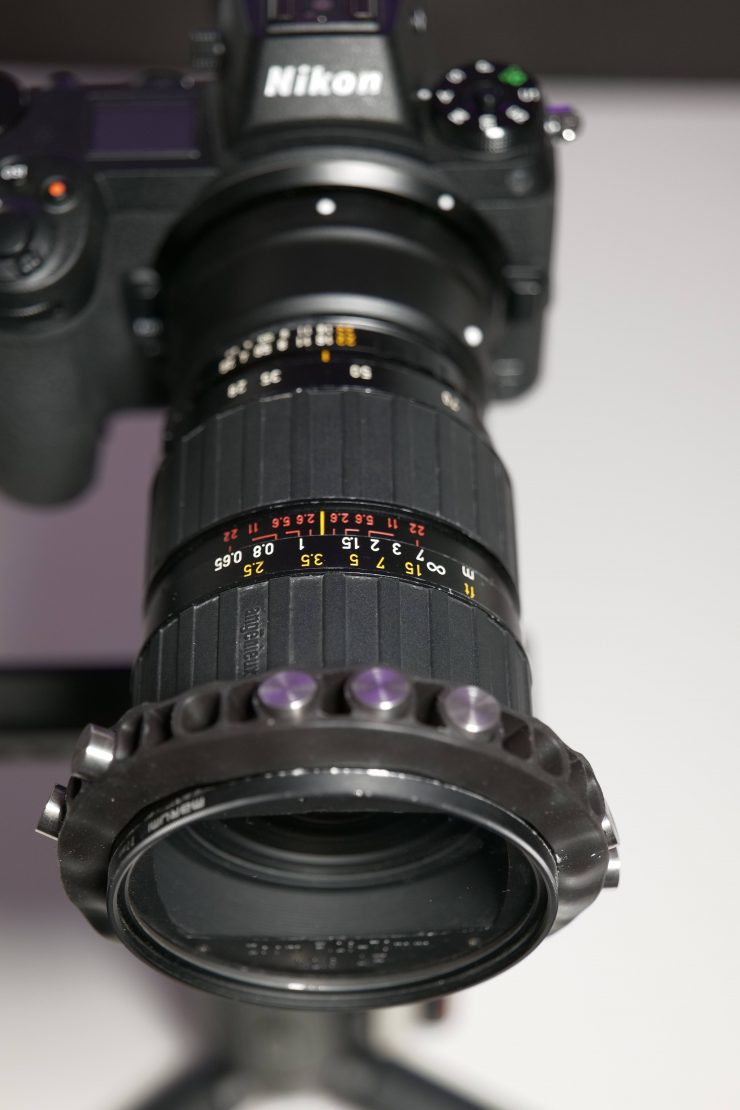
I got the lens to balance correctly but it is a bit of a tedious process. You need to keep adding weight and then subtracting weight to find the correct balance. This is not a particularly quick process, but once it is done you don’t have to do it again as long as you keep that ring with the weights on that lens.
If you take the StabiLens off your lens and decide to just put it on later you will come across two problems. The first is that it makes putting the ring back on extremely difficult once it is full of weights (if you don’t use it with a lens hood), and two, you need to make sure you put the ring on in the exact same position you originally had it in. For some lens changes, you will have more weights on one particular side of the ring. If you don’t put the ring back on in the identical position you balanced it in, your balance will be thrown off.
The system has really been designed so you need to use it with a lens hood. This is not always feasible.
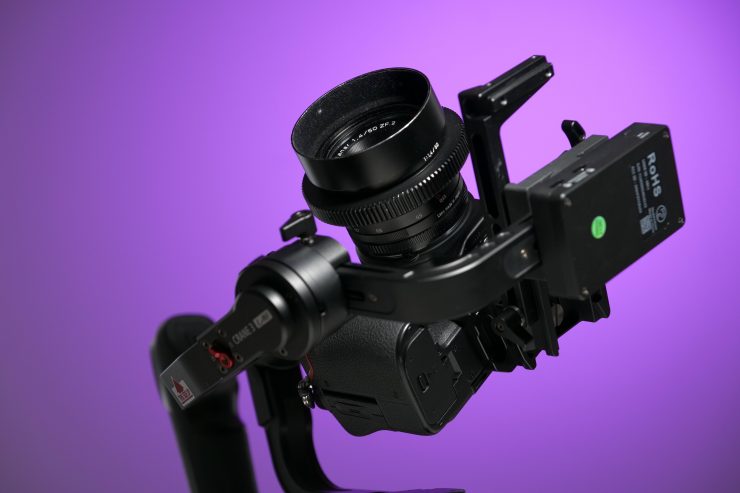
So it worked with one lens change, but what if I wanted to change the lens to a Zeiss 50mm F1.4 ZE lens? When I changed lenses, because of the weight and length of the lenses were so different, the camera became incredibly back heavy.
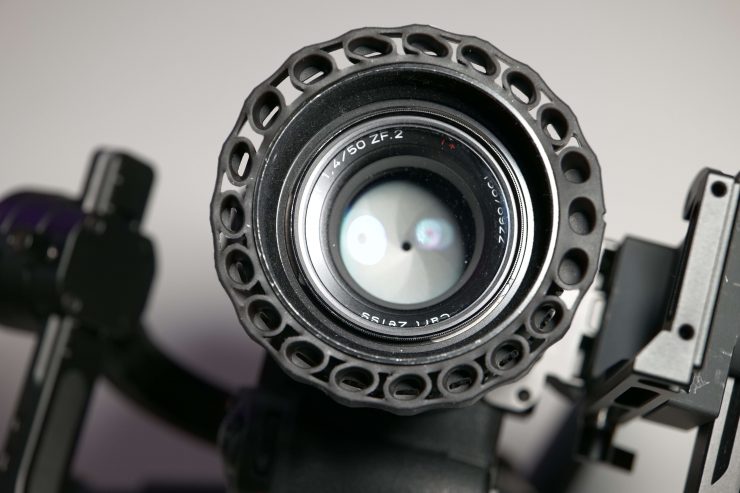
I put the rubber ring around the front of the lens and then started attaching 12g weights. The problem was, once I had filled the lens ring with 12g weights it was not nearly enough weight to balance that lens. In fact, it wasn’t even close.
I thought the whole idea behind the StabiLens was that I could go from a heavier lens to a lighter one? (I reached out to StabiLens to get some answers and you can read what they sent back to me at the bottom of this section.)
Now, the Sigma 18-35mm F1.8 lens weighs 810g in Nikon F mount and the Zeiss ZF2 50mm F1.4 weighs 330g. My ZF2 is cine modded so it actually weighs 460g. So the difference in weight between the two was 350g. If I placed 20x 12g weights into the front of the lens ring that gives me a total of 240g. Do you see the problem here? Not only is ist not enough weight, but you have to factor in that the lens is a lot shorter so it requires even more weight to get the correct balance.
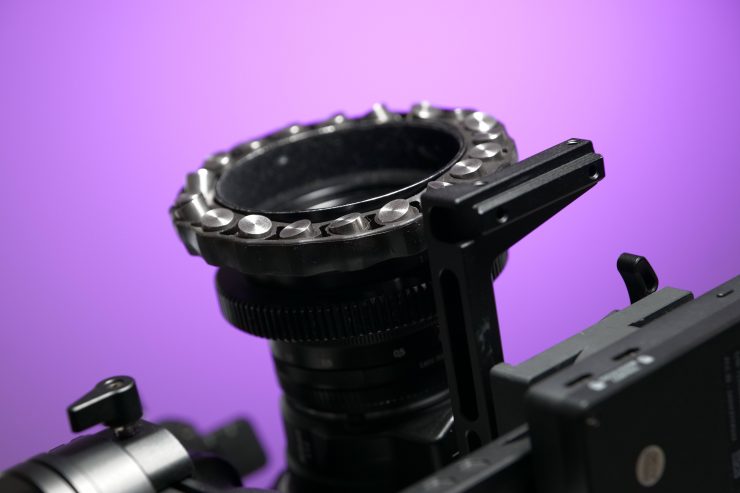
This is something that they don’t tell you in any of the marketing material. They should clearly state that it only works if you are using lenses within a certain weight range. If you are running a heavy lens and then you want to switch to a lighter, more compact lens, there is a good chance it won’t work.
But, could I attach two rings with weights on the front of my lens? Not really. There wasn’t enough room to do this and if I did it interfered with the focus ring. Also if I am running this lens on a mirrorless camera I need to use a variable ND filter. I can’t do this with a lens hood on.
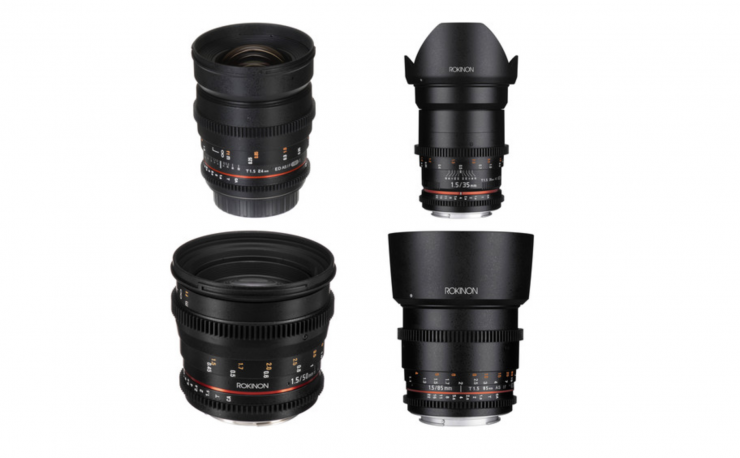
Unfortunately, the StabiLens system seems to have been designed for people who are using a certain lens type and brand, but are just changing the focal length. For instance, all 4 of the lenses in the Rokinon T1.5 cine prime lens kit (24mm, 35mm, 50mm and 85mm) are within 125g of one another. That means you could balance all four of those lenses by adding less than about ¼ pound to your rig.
My problem with this is if you only have to add a tiny bit of weight, you could easily just rebalance the gimbal in a matter of a minute because it is only a tiny adjustment needs to be made.
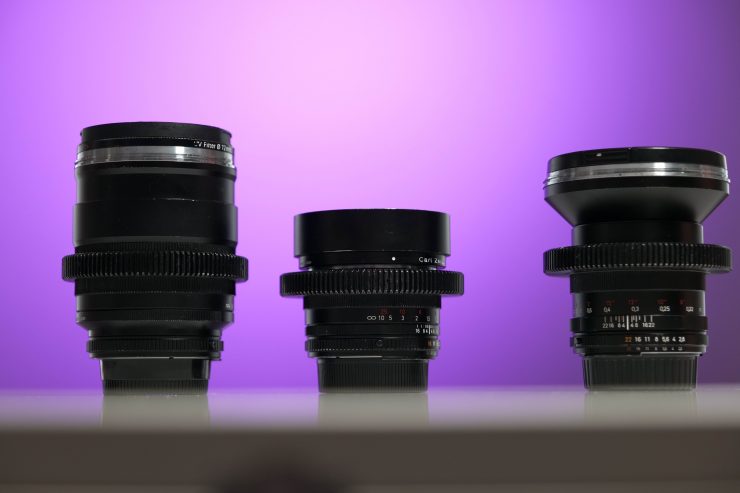
The Rokinon T1.5 Cine Primes may be a good example of lenses where the StabiLens system works well, but it doesn’t work with all prime lenses that are in the same family. If I wanted to change from my 21mm F2.8 Zeiss ZF2 to the 35mm and then the 50mm, I couldn’t do it using the StabiLens system because the weight difference is too extreme between the 35mm and the 50mm.
I would have liked to have seen heavier weights made available, or even as an option.
I reached out to StabiLens to mention my concerns and to get a response. Here is what they said:
In short, the answer to your question is: yes, there is a weight limitation to the system. The ring fully loaded with 12g weights adds 264g / .58lbs (the ring is about 24g). I’ve found this amount of added weight is ideal for many lenses in the same family (for example, the Sigma Art 50mm f1.4 is 815g and is about an inch shorter than the 18-35 f1.8) and it works great for lighter MFT lenses. Since added weight is a concern for many gimbal shooters I opted to begin with a product that was more geared toward filmmakers with lighter gimbal setups.
That said, there are two ways to deal with your current limitation and I plan to explicitly outline this in updated how-to and FAQ videos, which I’m in the process of producing.
It’s always recommended to add the StabiLens ring to the end of your lens hood. That simulates a longer lens and gets you more “bang for the buck” in terms of weight. It also has the added benefit of an easy on/off. You can store it on the lens hood as well.
There is no limit to the number of rings you can use as long as you have a spot to put it on your lens or hood. I’d bet that with 2 rings on the lens hood you could balance your current lenses quickly.
It’s also worth noting that we’re in development on some cool accessories that will also solve this problem. One is a larger “cinema size” ring that will have much more robust weight capacity and size to accommodate larger, heavier lenses. We’re also developing a magnetic solution that would attach to the outer diameter of the ring to add a nearly unlimited amount of weight.
Since this is a new product with a completely novel workflow we’re excited to hear the feedback from the community (with you at the forefront) and then use that feedback to quickly update the product to make it a truly universal solution to the gimbal balance problem.
It’s not for everyone
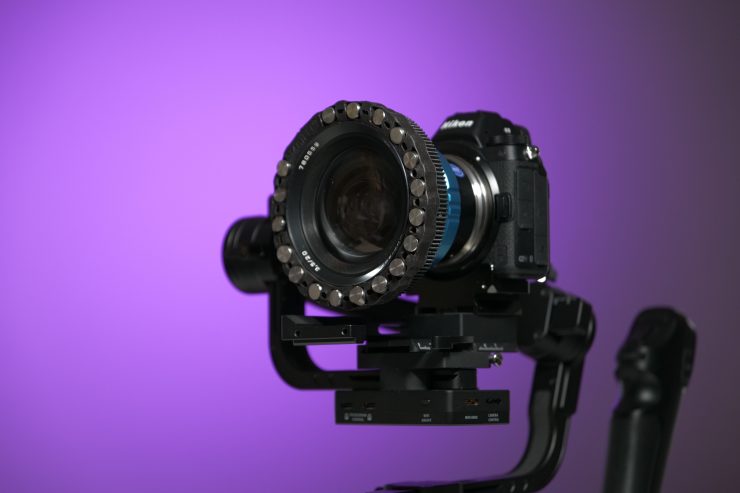
The StabiLens isn’t a product that is going to work for everyone. If you are just an occasional gimbal user and you rarely change lenses then this product isn’t going to be of any great use to you.
If you do quite a lot of gimbal work and you want to change lenses over quickly and be up and shooting without re-balancing then it does make a lot of sense.
Pricing & Availability
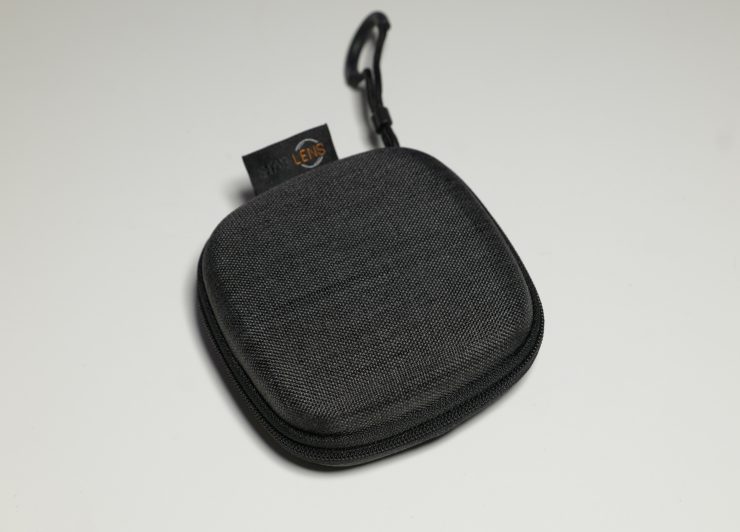
The StabiLens will start shipping on March 20th.
StabiLens Kits:
Cinematographer’s Kit: (Purchase Price $149.99)
2x StabiLens gimbal rings
20x tungsten alloy weights
20x steel weights
1x hard case
Starter Kit: (Purchase Price $99.99)
1x StabiLens gimbal ring
10x tungsten alloy weights
10x steel weights
1x hard case
Expansion Components:
Additional StabiLens Rings
Additional tungsten alloy weights
Additional steel weights
Additional hard cases
The system is a little on the pricey side considering it is essentially a rubber ring and some small pieces of metal. $99 USD is a lot to pay for a single gimbal ring and some metal weights.
Conclusion
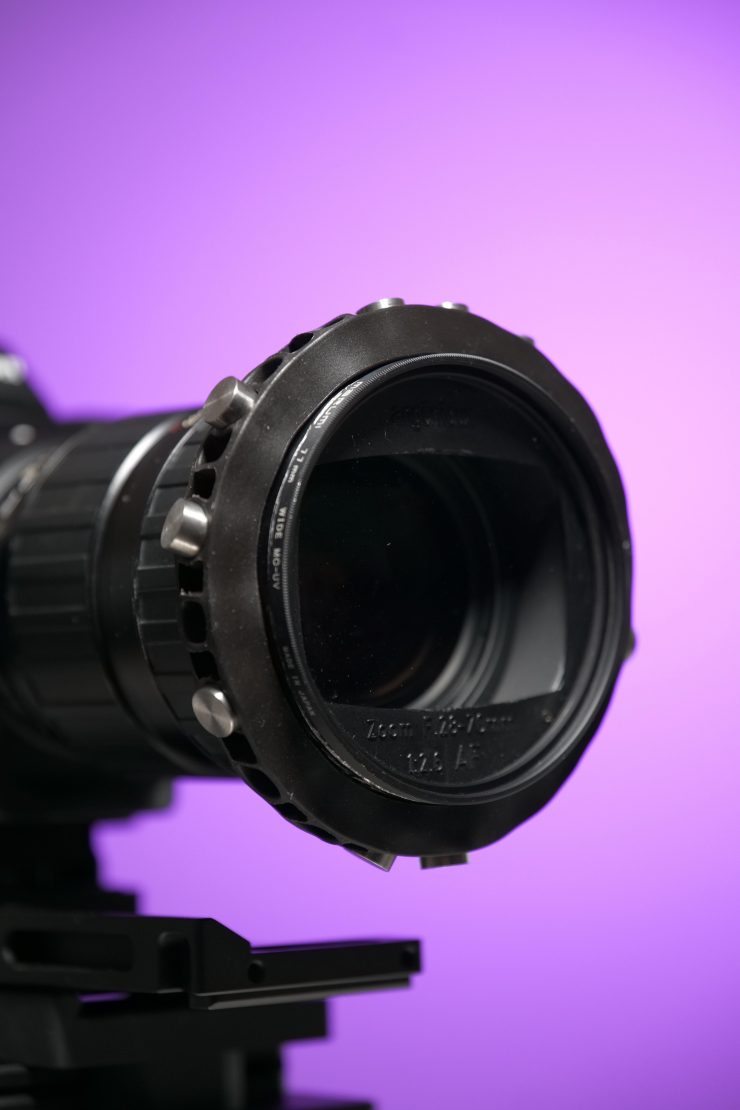
The StabiLens is in some ways a niche product and it won’t appeal to everyone.
It certainly does work as advertised, but you need to clearly understand and recognize that it won’t work for every lens change (at least not yet). Although, in saying that, StabiLens is listening to customer feedback and they are developing alternative methods to address some of the concerns I have raised. Like any new product, the StabIlens will probably improve over time.
You need to factor in what lenses you are using and what lenses you would like to change over on a gimbal to see if they would actually work with the StabiLens system.
If you are someone who uses a gimbal a lot and also likes to change lenses, then it is probably worth a look. For the occasional gimbal user who tends to use the same camera and lens combo all the time, the StediLens is not likely to appeal to you.
I don’t want to sound overly negative about the StabiLens, because it certainly does work, but with limitations. I applaud any type of out of the box thinking that results in someone bringing a unique product to market.
Like what we do and want to support Newsshooter? Consider becoming a Patreon supporter and help us to continue being the best source of news and reviews for professional tools for the independent filmmaker.

